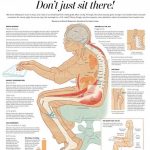HIGH INTENSITY LASER
High Intensity Laser (HIL) technology is based on the well-known principle of low level laser therapy (LLLT). High power and choice of the right wavelength allow for deep tissue penetration. HIL offers powerful and non-addictive form of pain management. Through a natural process of energy transfer (biostimulation and photomechanical effect) it speeds up healing and regeneration. HIL is particularly effective in treatment of sport injuries, e.g. muscle strain or joint distortion, and back pain caused by e.g. herniated disc or disorders in the cervical region causing neck pain.
MECHANISM OF ACTION
Laser (acronym for Light Amplification by Stimulated Emission of Radiation) can be used as a therapeutic device which produces monochromatic (one specific wavelength), coherent (constant phase) and polarized (directional) light.
GENERATION
The source of laser beam in therapeutic high power lasers is typically a semiconductor diode capable of producing light of one specific wavelength (e.g. 1064nm).
The light generated by the diodes is then directed into an optical fiber, end of which is connected to the laser applicator. The beam is further processed by a series of lenses which ensure the right direction and diameter of the beam and consequently the spot.
Therapeutic lasers are defined by their power and wavelength. Wavelength is important as the ideal effects on human tissue are of light in the “therapeutic window” (approx. 650 – 1100 nm). 1064nm wavelength of the High Intensity Laser ensures a good ratio between penetration and absorption in the tissue. The amount of power a laser can safely deliver can reduce therapy time by more than a half.
CLASSES
Based on the power and wavelength lasers are divided into several classes. Therapeutic lasers are typically of class 3B, low level laser therapy (LLLT) with power less than 500 mW, and class 4, High Intensity Laser with power 500 mW and more.
MODES
The High Intensity Laser can be used in two modes – pulsed and continuous. Pulsed mode represents turning the laser on and off with a very high frequency and is used as an analgesic treatment. Continuous irradiation is a mode in which the laser remains turned on the whole time of the therapy and is used to promote biostimulation, healing and recovery.
SAFETY
Although therapeutic High Intensity Laser is generally safe to use and promotes reparative processes, it can still damage the eye and so protective eyewear is obligatory throughout the therapy. With increasing power of the High Intensity Laser, caution is in place as to its thermic effects which on one hand provide very pleasant therapy, but on the other, if not monitored and used by a trained operator, can damage the tissue.

INDICATIONS
Sport Injuries
Trigger Point
Sprained Shoulder
Ankle Sprain
Herniated Disc
Cervical Pain
Low Back Pain
Degenerative Knee Arthritis
Muscle Strain
MEDICAL EFFECTS
High Intensity Laser is typically used in two modes – pulsed and continuous. Each mode affects the tissue differently and triggers different medical effects. Overall medical effects are biostimulation, pain relief, anti-inflammatory effect, superficial thermic effect and muscle relaxation.
Pulsed
- Analgesic Effect
- Microcirculation Stimulation
- Anti-inflammatory Effect
Continuous
- Biostimulation
- Thermic Effect
- Muscle Relaxation
ANALGESIC EFFECT
Analgesic effect of the High Intensity Laser is promoted mainly when using the pulsed mode. The High Intensity Laser can deliver very short pulses at a very high repetition rate. With this setting it has the ability to create actual pressure. The pressure waves are carried through the tissue where they stimulate free nerve endings. Based on the gate control mechanism of pain, mechanical stimulation of free nerve endings leads to their inhibition and hence pain relief. Analgesic effect of the High Intensity Laser is instantaneous and long-lasting.
MICROCIRCULATION STIMULATION
Mechanical waves created by the High Intensity Laser stimulate local microcirculation and support lymph drainage of the pathological area. Combining biostimulation and photomechanical stimulation, the High Intensity Laser therapy actually heals the tissue while providing a powerful and non-addictive form of pain management.
ANTI-INFLAMMATORY EFFECT
The energy delivered to the cells by the High Intensity Laser speeds up cell metabolism and causes faster resorption of proinflammatory mediators. Decreased concentration of proinflammatory mediators restores capillary permeability and results in complete elimination of inflammation and faster return to one’s daily activities.
BIOSTIMULATION
The term biostimulation means stimulating the organism on the cellular level to enhance healing and recovery. Oxygen is processed in cells by mitochondria. Here oxygen is processed by a cascade of respiratory enzymes and delivered to ATP synthase which synthesizes the organism’s source of energy – ATP. Faster exchange of oxygen and metabolites due to laser irradiation causes more oxygen atoms to reach mitochondria. Mitochondria are further stimulated to synthesize ATP faster. ATP allows for faster synthesis of RNA and DNA and leads to faster recovery, healing and edema reduction in the treated area.
THERMIC EFFECT
The thermic effect of the High Intensity Laser therapy is caused by the absorption of the 1064 nm laser beam in the superficial structures which consequently causes a temperature increase in the tissue. Warming the superficial structures is responsible for decrease of scatter and absorption coefficients for the 1064 nm wavelength and allows for even deeper penetration by the 1064 nm light. Thermic effect also causes vasodilatation. As a result, blood perfusion increases, larger amounts of oxygen are delivered to the tissue and more metabolites are resorbed.
MUSCLE RELAXATION
The energy transferred by continuous High Intensity Laser emission to the tissue causes superficial hyperthermy and consequently vasodilatation in the treated area. As increased perfusion passes more blood through the treated area, the muscles relax. In painful muscle-related indications such as trigger points, muscle strain etc., the patient feels immediate relief of pain caused by the muscle tension, and immediately increased range of motion.
THERAPY SEQUENCE
Laser operation is in essence relatively simple
1. Define the location

2. Select program
3. Put on safety goggles
4. Start the therapy
5. Use spiral motion for analgesia
6. Use scanning motion for biostimulation









